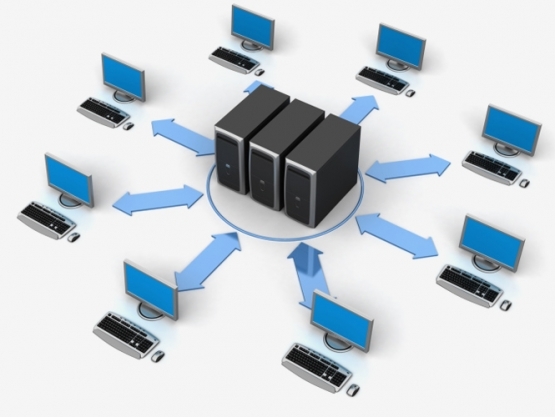
Servers, Storage & Virtualization
Today, Virtualization has become a cornerstone of data centers. Having realized the cost and efficiency benefits of virtualization through the available resource consolidation, many IT organizations are looking to take virtualization deeper into their data centres by virtualizing mission-critical workloads and building flexible private cloud infrastructures. Storage virtualization is the pooling of physical storage from multiple network storage devices into what appears to be a single storage device that is managed from a central console. Storage virtualization helps the storage administrator perform the tasks of backup, archiving, and recovery more easily — and in less time — by disguising the actual complexity of a storage area network. Administrators can implement virtualization with software applications or by using hardware and software hybrid appliances.

Networking
Networking In the world of computers, networking is the practice of linking two or more computing devices together for the purpose of sharing data. Networks are built with a mix of computer hardware and computer software.
Networks can be categorized in several different ways. One approach defines the type of network according to the geographic area it spans. Local Area Networks, for example, typically span a single home, school, or small office building, whereas wide area network, reach across cities, states, or even across the world.
Computer networks also differ in their design. The two basic forms of network design are called client/server and peer-to-peer. Client-server networks feature centralized server computers that store email, Web pages, files and or applications. On a peer-to-peer network, conversely, all computers tend to support the same functions. Client-server networks are much more common in business and peer-to-peer networks much more common in homes. A network topology represents its layout or structure from the point of view of data flow. In so-called bus networks, for example, all the computers share and communicate across one common conduit, whereas in a star network, all data flows through one centralized device. Common types of network topologies include bus, star, ring networks and mesh networks.
Communication languages used by computer devices are called network protocol. Yet another way to classify computer networks is by the set of protocols they support. Networks often implement multiple protocols with each supporting specific application. Popular protocols include TCP/IP, the most common protocol found on the Internet and in home networks.
We bring to your business industry-best practices, world-class engineers, strong partner relationships and a proven methodology that puts industry leading technology products. With Intertek, you can be confident that your network will be built on a sound foundation based on industry best practices, solid design and the world’s most advanced products—whether you’re planning a network migration, an expansion, an overlay network or a Greenfield deployment.
Our company have the full range of communications network technologies, including LAN, VoIP, Security and wireless LAN.
Our specialists will assist in following services:
Network Design Project Planning System Upgrade LANs/WANs Unified Communication Services Wireless Solutions Remote Access Solutions Implementation Post Installation Support On-Site & Remote Support Proactive Network Support & Maintenance